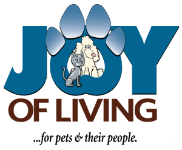Resolving Dog Gastrointestinal Issues
Posted on September 13, 2016 by Joy of Living No comments

Has your dog ever eaten something then suffered from diarrhea, vomiting or both afterward? Dog gastrointestinal issues are scary, and messy! So how can you resolve them, or determine if a vet visit is needed?
Introduction
Tubby (pictured above), a dog walking client, is a 14 year old diabetic Lhasa Apso, requiring two insulin injections daily. Her normal kibble is a prescription formula for diabetic dogs. She likes to “share” her guardian’s meal, and that’s where the gastrointestinal issues begin.
Tubby rarely turns down any “people food” offered to her. Foods may include such items as bacon, bread, and other meats. A few hours later, Tubby is prone to bouts of diarrhea and/or constipation.
Emphasizing to her guardian the digestive impacts to Tubby, removing all people food “samples” and giving her only her prescribed kibble has worked to resolve her digestive problems.
Steps For Resolving Dog Gastrointestinal Issues
Resolving dog intestinal issues isn’t always easy, though. If your dog vomits, but seems ok otherwise (wants to eat and drink), that is usually a good sign. It’s best to remove food and water from them for about 12 hours.
Vomiting
Once a dog vomits, his body is still in that mode, and any food or water ingested can spur another vomiting episode. Provide your dog access to a very small amount of water in the form of a couple of ice cubes or crushed ice. Wait 12 hours before introducing a small bite of food.
If your dog does not get sick after the small bite of food, gradually reintroduce more food and water. If vomiting continues after this, or his demeanor becomes more listless, call your vet or head to an emergency vet clinic.
Diarrhea
Small Intestine Diarrhea
This type of diarrhea is usually characterized by very loose, watery stool. Dogs may be listless and seem sick.
If the dog seems to be acting normally, a bland diet of boiled white meat chicken and white rice can resolve the problem. This diet is pretty easy to digest and works to bind the dog’s digestive system to stop the diarrhea. As mentioned above, introduce in very small portions and gradually increase quantity.
Large Intestine Diarrhea
This type of diarrhea is characterized by soft and mushy stool, much like a cow patty. There may be mucus and blood in the stool. Dogs with large intestine diarrhea usually seem to act normal otherwise.
The best diet for dogs with large intestine diarrhea is one high in fiber. The bland diet of boiled white meat chicken and white rice still applies, but add pumpkin to provide the fiber. Once again, begin with very small portions and gradually increase quantity.
Conclusion
Feeding the applicable diet for a couple of days should begin to resolve the problem. If your dog’s condition does not improve or worsens, contact your vet immediately.
It’s a given, dog gastrointestinal issues will pop up from time to time. Knowing what to look for and the appropriate steps to take will help your dog feel better quicker!
For more information on avoiding gastrointestinal dog issues, see this post
